Here’s a quick guide on how to measure a chainsaw bar length:
Simply take a measuring tape, and measure from the tip of the bar to where it meets the saw’s body. Then, round that measurement to the nearest even number, and there you have it – your chainsaw bar length.
Btw, I’m Samuel Anali and I have 20+ years of chainsawing experience. In this article, I’m going to cover: 👇
- ✅ The simplest way to measure a chainsaw bar,
- ✅ How to read a chainsaw bar (with examples!),
- ✅ How to choose the right bar length for a chainsaw,
- ✅ Longer VS Shorter bars (PROS & CONS)
So, are you READY??
Let’s jump right in!
Table of Contents
ToggleStep-By-Step Guide to Measure Your Chainsaw Bar Length
Here’s how to measure the length of a chainsaw bar step-by-step: 👇
Before You Begin!
Before you begin to measure your bar, let’s run through a quick checklist of essential precautions to take care of – 👇
- ✅ First of all, make sure the engine is OFF (we don’t want any surprises, do we?),
- ✅ Wear protective gloves (IMPORTANT!),
- ✅ Double-check to see if the bar nuts are snugly tightened (to prevent any unwanted bar movement).
Once you’ve ticked off all these boxes, you’re ready to dive into the actual task.
Step 1: Grab a Measuring Tape

For this process, all you need is a regular measuring tape.
Rulers are also good but the issue is that they often fall short when it comes to covering the entire length of a chainsaw bar.
Plus, measuring tapes are – 👇
- ✅ flexible,
- ✅ long enough,
- ✅ easy to read,
- ✅ and more accurate.
Step 2: Measure the Cutting Length of the Bar
Let me break it down for you 👇
Chainsaw bars are measured by their cutting length, not the entire length from end to end.
In other words, bar length is the amount of the bar sticking out of the body of your saw.
So, start measuring from the tip of the bar and go all the way to the end where it meets the body of your saw (powerhead).
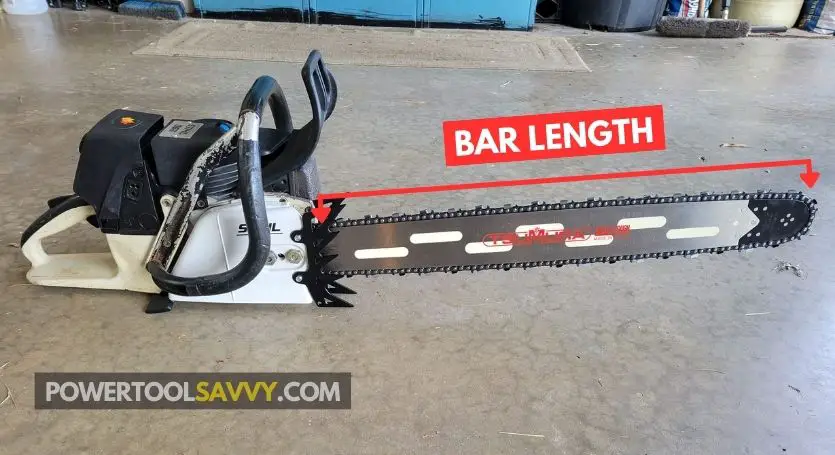
💡 TIP: Make sure you’re measuring it along its middle portion to get a more accurate measurement.
“But how to measure a bar that’s off the saw?“
For a bar that’s off the saw, measure from the tip to the mounting slot (where the bar will fit into the power head).
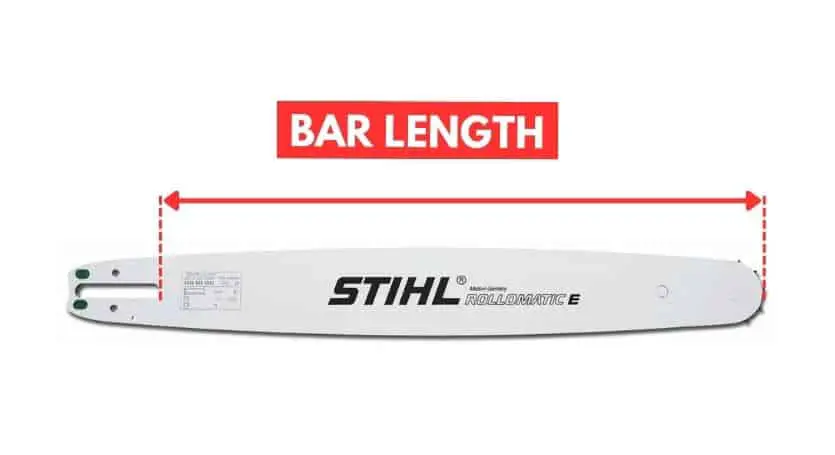
✍️ NOTE: Some Stihl bars don’t follow the “cutting length” rule. They’re measured from the tip to the end of the bar.
So in that case, you’ll need to measure the entire length of the bar.
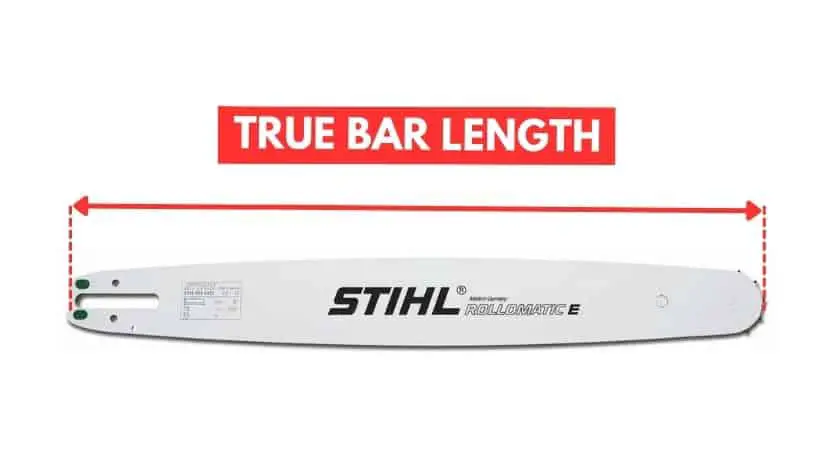
Step 3: Round Up the Number
Now, it’s possible that your measurement might end up as an odd number, say 17.5 inches, for instance.
In that case, just round it off to the nearest even number – 18 in this case. And this is the actual length of your chainsaw bar.
Why, you ask? Because chainsaw bars are typically only available in whole-number sizes like 16 inches, 18 inches, 20 inches, and so on.
So, next time when you’re buying a chainsaw bar, you’ll know exactly what size you need!
How to Read a Chainsaw Bar?
Guess what?
You don’t have to break out the measuring tape every time you want to figure out a bar’s length. There’s a much simpler way – just read the markings on it!
Most chainsaw bars come with these handy stamps or engravings that include the length along with other essential information.
For example, here’s an 20″ Stihl bar. Now let’s break down the markings on it. 👇
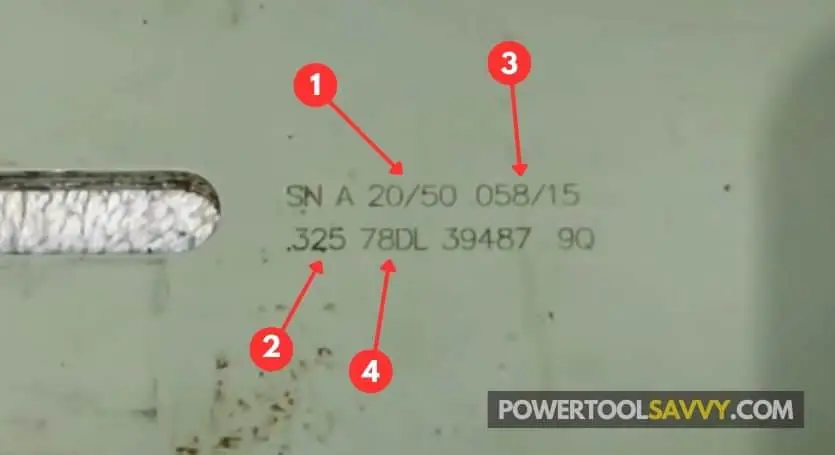
- 20/50 (in/cm) = Bar Length (Only the cutting length. Not the entire length of the bar!)
- 0.325 (in) = Chain Pitch (The distance between 3 consecutive divided by 2. Common chain pitch sizes are: 0.325″, 3/8″, 0.404″, and 1/4″.)
- 0.058 (in) = Chain Gauge (The thickness of the chain drive links the bar can hold. Common chain gauge sizes are: . 043″, 0.50″, . 058″, and . 063″)
- 78DL = Number of Drive Links (The number of chain drive links the bar can run)
This way, you can easily figure out the length of your bar just by looking at the markings on it.
Plus the additional information will help you in choosing the right chain for your chainsaw.
How to Choose the Right Bar Length for Your Chainsaw?
Here’s the catch: 👇
How long or short of a bar you can put on your chainsaw depends on the power of your chainsaw.
For gas-powered chainsaws, it’s the engine displacement (cc) of your chainsaw that determines the maximum length of bar you put on it.
And for electric chainsaws, it’s usually the Volts (Battery-powered) or Amps (Cordless Electric).
Check out this table that outlines the recommended bar length based on chainsaw power ratings: 👇
| Chainsaw Type | Power Rating | Recommended Bar Length |
|---|---|---|
| Gas-powered | Less than 25 cc | 10-12” |
| Gas-powered | 26-35 cc | 12-16” |
| Gas-powered | 36-45 cc | 14-20” |
| Gas-powered | 46-60 cc | 16-24” |
| Gas-powered | 60-75 cc | 18-28” |
| Gas-powered | 76-90 cc | 20-32” |
| Gas-powered | 91-100 cc | 24-36” |
| Gas-powered | 100-115 cc | 26-50” |
| Gas-powered | More than 116 cc | 28-84” |
| Battery-powered | 18-20 Volts | 10-12" |
| Battery-powered | 24-30 Volts | 10-14" |
| Battery-powered | 36-40 Volts | 10-16" |
| Battery-powered | 40-50 Volts | 12-18" |
| Battery-powered | 50-60 Volts | 12-20" |
| Corded Electric | 8-12 Amps | 10-16" |
| Corded Electric | 13-15 Amps | 12-18" |
✍️ NOTE: The table above is for general reference only. For the most accurate info, you should always refer to your chainsaw’s manual.
Open up the manual, go to the “Specifications” or “Technical Information” section, and you’ll find the recommended bar length for your chainsaw. (here’s an example: 👇)
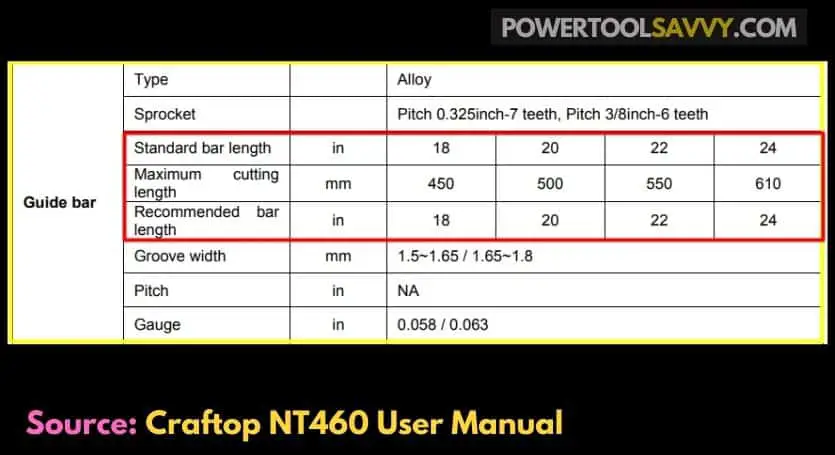
Longer VS Shorter Chainsaw Bars
Let’s say you’ve got yourself a 60cc chainsaw, and as per the chart above, it can handle a bar length ranging from 16″ to 24″.
Now, the BIG question is – should you opt for a longer bar or a shorter one?
To be honest, both choices come with their own set of PROS & CONS!
Longer Chainsaw Bars (PROS & CONS)
PROS:
- ✅ Less bending while cutting
- ✅ Extended reach
- ✅ Increased cutting efficiency
CONS:
- ❌ Reduced power
- ❌ Increased weight
- ❌ Longer bars are expensive
- ❌ Greater safety concerns
- ❌ Oiling issues
Check out this article where I’ve explained the pros & cons of longer bars in detail!
Shorter Chainsaw Bars (PROS & CONS)
PROS:
- ✅ More power
- ✅ Lightweight
- ✅ Better balance & maneuverability
- ✅ Smaller bars cost less
- ✅ Require less maintenance
- ✅ Less chance of hitting the ground
- ✅ Your saw is less likely to bog down
CONS:
- ❌ More bending while cutting
- ❌ Difficulty reaching those pesky branches
- ❌ Limited cutting capacity
- ❌ Increased vibrations
- ❌ Smaller bars are more prone to Kickback
Read this article to learn more about the pros & cons of shorter chainsaw bars!
I personally prefer shorter bars due to their light weight & power.
For instance, I’ve got a Stihl MS-261 (50cc) running an 18″ bar, and it’s been serving me really well.
Sure, it could handle up to a 24″ bar, but I’m not willing to sacrifice that power for a few extra inches of reach. 🙂
If I ever find myself needing that extra reach, I’ll just invest in a higher cc chainsaw!
What's the Most Common Chainsaw Bar Length?
Chainsaw bars between 16-24″ are the most common.
However, depending on the specific model and power rating of your saw, you might have the flexibility to go as short as 8″ or as long as a whopping 72″.
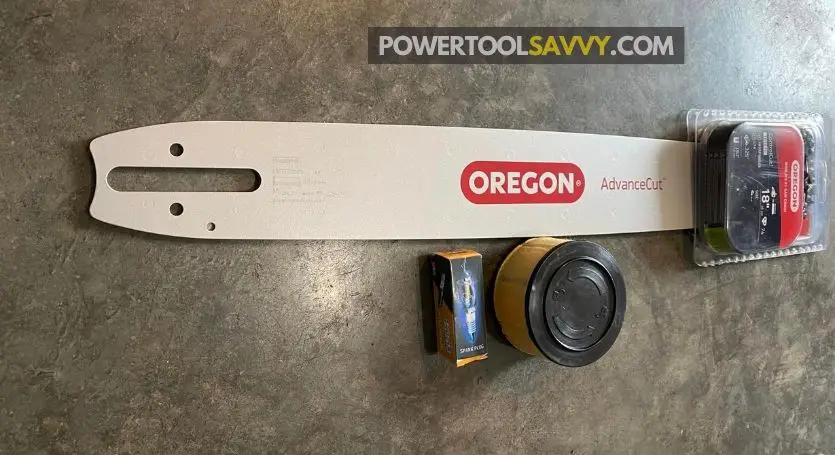
(Check out this article where I’ve put together the longest chainsaw bar ever made!)
I personally don’t feel at ease with bars longer than 28″. To be frank, I’ve got just a small handful of bars in my collection that exceed the 28″ mark.
Here’s a rule of thumb I follow: 👇
- For lighter jobs like pruning or trimming, I prefer a 14-16″ bar.
- When I’m dealing with more substantial jobs such as felling trees or bucking hardwood, I lean toward an 18-20″ bar.
- And if my friends ever surprise me with some thick logs, I always whip out my trusty 24″ bar and take on the job!
But wait…
Don’t just take my word for it. Experiment with different lengths & see what works best for you!
Remember, every saw and every job is unique!

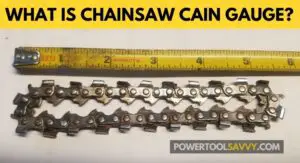
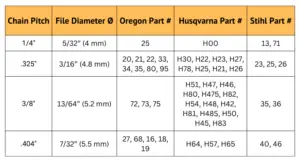

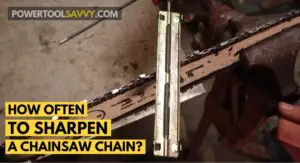

Pingback: Chainsaw Bar Length VS CC Chart (Last Updated: June, 2023)
Pingback: Can I Put a Longer Bar on My Chainsaw? (If YES, How Long?)